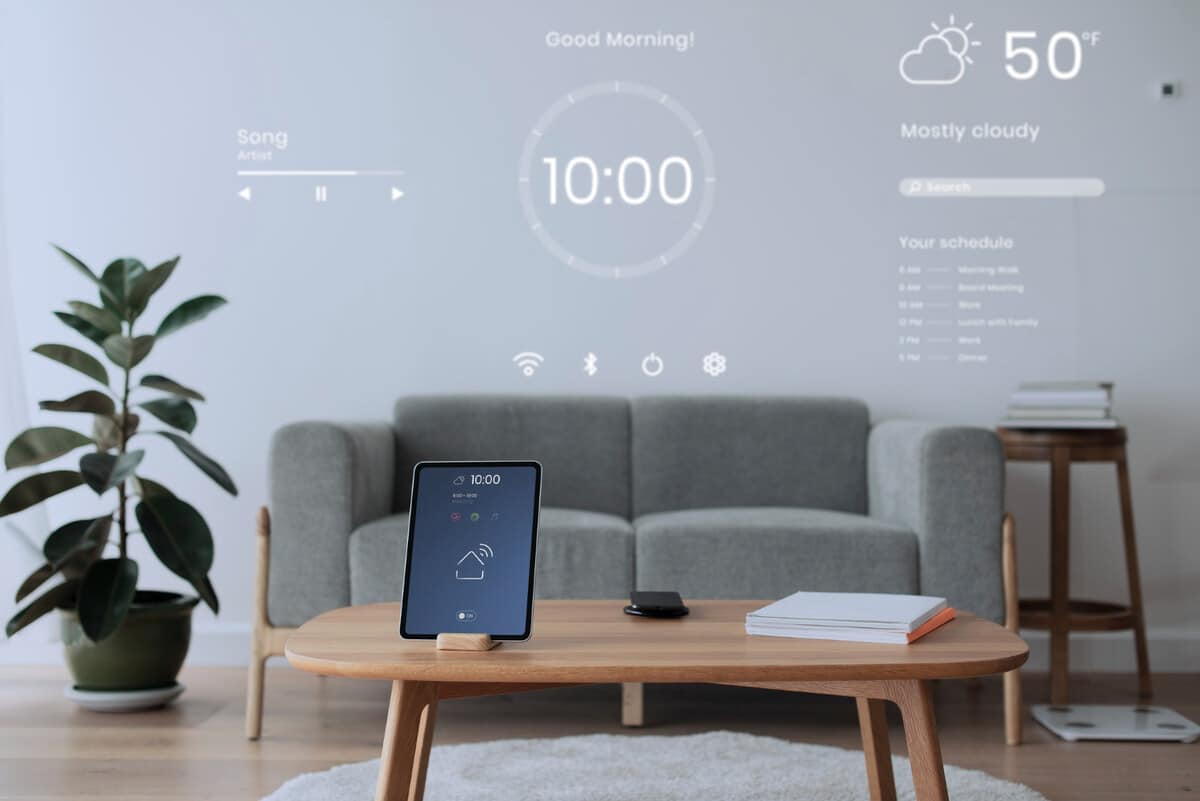
- AI in field service management
- fsm
- smart home
Beyond the Blinking Light: Why Smart Home Wi-Fi Demands a Field Service Revolution
A strong Wi-Fi connection is essential in a smart home, supporting all the devices and systems that make up the smart home ecosystem. This presents field service organizations with both a significant opportunity and distinct challenges. Simply setting up a smart home and leaving is no longer sufficient; success now hinges on superior setup, ongoing support, and highly skilled smart home technicians.
Building the Foundation: Quality Over Quantity
The industry is shifting from quick appointments to focusing on creating a strong and reliable Wi-Fi foundation. Just as you wouldn’t build a house on unstable ground, you shouldn’t expect your smart home to perform well on a weak network. It’s essential to prioritize a robust setup and effective customer education. When smart home technicians ensure equipment is optimally placed, settings are configured correctly, and the network is clearly explained to customers, they help ensure long-term customer satisfaction and reduce future service calls.
The Hidden Link: Why Technician Tools and Training Matter

While a good Wi-Fi setup is necessary, the installing technician must also be well-prepared. As devices and protocols evolve, so too must their training. Therefore, investing in robust smart home technician training is crucial to maintain the required performance.
Today, field professionals should not only install systems; they must also understand signal interference, work with mesh network protocols, and anticipate usage conflicts, all of which require ongoing training. Well-trained technicians with access to technician tracking software and route optimization tools arrive better prepared, completing jobs with fewer callbacks.
The tools they use are just as necessary as the skills they have. Modern field service technician tool bags are not just accessories; they hold diagnostic devices, mobile field service apps, specialized adapters, and other essential tools for modern installations. If your team has the right knowledge and tools, they can advise, teach, and earn the trust of your customers.
The Upsell Potential and the Device Dilemma
Each new smart device entering the market increases the opportunity for upselling, but it also introduces complexity. Managing the many customer devices and their potential issues can be very frustrating. This highlights the need for field service teams to be well-prepared to handle and resolve a wide range of problems across various devices.
The Pillars of Retention: Support and Reliability
According to Statista, “The number of smart homes in the smart home market in the United States was forecast to continuously increase between 2023 and 2028 by in total 39.7 million users.”
In the world of smart homes, strong customer service and a reliable network are essential for customer retention. If a smart thermostat isn’t working or the smart lights are not functioning properly, customers expect prompt and practical assistance. Proactive network maintenance and providing quick support helps build trust and prevent customer churn.
Technicians: The Unsung Heroes of Trust

Your field technicians represent your company to customers, not just install equipment. They are responsible for interacting with customers face-to-face, educating them about their smart home system, and earning their trust. Experienced smart home technicians are often able to find the most effective ways to handle common device issues, which highlights their importance in resolving problems quickly. Providing technicians with the right tools, information, and autonomy is essential for delivering exceptional service.
Smart Support: Managing Service at Scale
As smart homes scale in complexity, managing technician deployments and customer needs simultaneously becomes a logistical challenge. This is where service technician dispatch software proves invaluable. It helps to assign and dispatch skilled professionals to customers based on their past interactions, location, and the specific nature of the problem.
We at Praxedo are leading the way by integrating intelligent systems that track performance and enable real-time updates. This enhances field service organization, allowing smart home service providers to maintain continuous oversight of operations.
Beyond improved dispatch software and live updates, the internet field technician can communicate with the office, update customer information, and request more support when needed. The result is a seamless and efficient service experience that customers will value. By using the right field service technician management software, companies can monitor their workforce, enhance operational efficiency, and ensure consistently high service quality.
Proactive Solutions: The Future of Field Service
The primary goal of smart home service providers is to prevent unnecessary service calls. This means organizations should focus on resolving problems before they escalate, utilizing data and smart tools. Imagine a system that promptly identifies network issues, allowing the customer to remain unaware while the problem is resolved remotely or automatically. The industry is rapidly moving in this direction, empowering service providers to leverage data and analytics to identify and address issues proactively.
Empowering the End-User: Simple Solutions for Complex Problems

There’s also a rising focus on empowering customers to interact with and solve their own problems. When customers can easily use tools to diagnose minor issues or find answers to their questions, it benefits field service teams and significantly enhances customer satisfaction. Sharing detailed technical information with customers can help them resolve problems independently, reducing the need for service calls.
A Glimpse into the Future: Connected Health and Rural Challenges
There’s a significant opportunity for growth in connected health and remote healthcare services as part of the smart home ecosystem. Imagine how much better home monitoring and virtual care would be with a robust smart home network. Simultaneously, this bright future is challenged by the ongoing problem of rural hospital closures, underscoring that reliable in-home internet and support are even more critical in underserved areas.
Bridging the Digital Divide: Bringing Wi-Fi to Rural Smart Homes
Smart technologies should also be accessible to people in remote areas. Rural areas often struggle with unreliable internet and limited options for home Wi-Fi service providers. As a result, there’s a growing demand for providers who can deliver both internet and smart home features in these regions.
At this point, home internet service providers must innovate. Providers need to collaborate with field service experts such as Praxedo to overcome logistical challenges, environmental obstacles, and infrastructure gaps. By concentrating on long-term reliability and empowering customers with control, rural homes can enjoy the same dependable and automated services as their urban counterparts.
With skilled smart home technicians, proper planning, and community support, smart home maintenance is now available in many zip codes, not just city centers. This results in more connected individuals, improved access to healthcare, and enhanced educational resources.
Conclusion
The smart home revolution demands an evolution in field service management. By focusing on quality setups, empowering technicians, solving problems proactively, and simplifying the customer experience, field service organizations can move beyond the blinking light and fully realize the potential of the connected home. The future of smart homes hinges not just on the devices themselves, but on the
Our similar articles.
-
- customer experience
- fsm
- customer service
The Evolution of Service: A Rolls-Royce Perspective on Outcome-Based Business Models
November 10, 2025 -
- fsm
- AI in field service management
- Satellite Internet Providers
- Telecom Industry
Why Satellite Internet Providers Need an FSM Solution
September 4, 2025 -
- Field Service Management
- service companies
- service businesses
- service providers
- fsm
Why Customer Satisfaction Is Important for Service Providers
March 12, 2025


